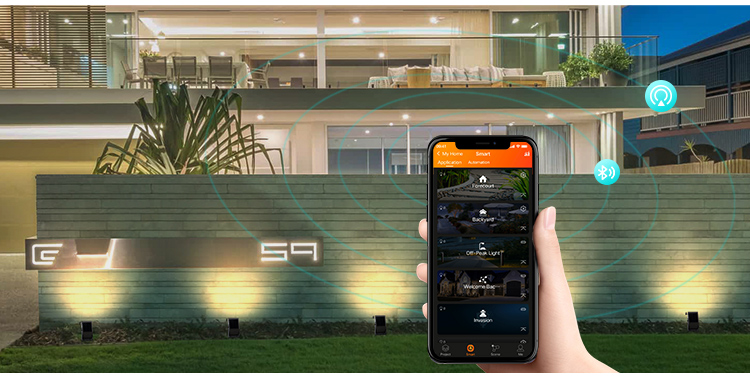In the context of global energy shortages and increasingly prominent environmental issues, solar lighting solutions are rapidly on the rise. As a key player in this field, solar wall lights have steadily gained a foothold in the lighting market due to their eco-friendliness, energy efficiency, cost-effectiveness, and easy installation. This article provides an in-depth analysis of the positioning and competitive landscape of solar wall lights in the 2024 lighting market, offering a comprehensive overview for businesses and consumers alike.
Current Status and Development Trends of the Lighting Market
The lighting market has undergone rapid technological development and transformation in recent years. Traditional incandescent bulbs have gradually been replaced by more efficient LEDs and CFLs (compact fluorescent lamps). Meanwhile, the emergence of smart lighting and solar lighting products has injected new vitality into the market. As consumer demand for energy efficiency and environmental protection increases, the acceptance of renewable energy products in the market is also on the rise, particularly in residential and commercial lighting sectors.
The Rise and Significance of Solar Wall Lights
Solar wall lights, which use solar energy as their primary power source, are quickly becoming a favorite among consumers due to their green and eco-friendly characteristics. These lights absorb solar energy during the day and store it in built-in batteries, automatically lighting up at night to provide continuous illumination without relying on the power grid. Such products not only help reduce energy consumption but also lower electricity bills, making a positive impact on environmental protection.
Market Positioning of Solar Wall Lights
Overview of Target Market
The target market for solar wall lights primarily includes consumers and businesses that value environmental protection and cost-effectiveness, such as residential areas, commercial properties, public facilities, and remote regions. As awareness of sustainable products continues to grow among consumers, solar wall lights are gaining increasing attention.
Comparison of Solar Wall Lights and Traditional Lighting Solutions
Compared to traditional LED and CFL lighting, solar wall lights have clear advantages in terms of energy efficiency and environmental friendliness. Traditional lighting relies on grid power, whereas solar wall lights operate entirely independently, reducing electricity demand and carbon emissions. Additionally, solar wall lights are easier to install, requiring no complex wiring, thus lowering installation costs and time.
Segmentation Positioning of Solar Wall Lights in the Lighting Market
In the lighting market, solar wall lights are primarily positioned in the following segments:
- Residential Lighting: Mainly used in areas like courtyards, walkways, and fences.
- Commercial Lighting: Used on exterior walls of malls, parking lots, etc.
- Public Facility Lighting: Such as parks, streets, and other public areas.
- Remote Area Lighting: Especially suitable for areas with unstable or lacking power supply.
Unique Selling Points of Solar Wall Lights
- Environmentally Friendly and Energy Efficient
By using solar energy, a renewable resource, solar wall lights effectively reduce dependence on traditional energy sources, aligning with modern society’s demand for sustainable development. They significantly lower carbon footprints and help users save on electricity bills.
- Economic Analysis
Although the initial cost may be slightly higher than traditional lighting equipment, the long-term cost of using solar wall lights is lower. There are no electricity expenses, and they require minimal maintenance, offering a high overall cost-performance ratio.
- Easy Installation and Maintenance
Solar wall lights require no complex cable connections and can be used with simple installation steps, making them suitable for DIY users. Moreover, due to their simple design, routine maintenance is also very easy.
- Technological Advancements
Modern solar wall lights typically feature high-efficiency solar panels and LED light sources, such as the SGL-15 series, which can generate electricity effectively even in low-light conditions, providing ample brightness and long-lasting illumination.
Competitive Landscape Analysis
- Overview of Major Competitors
In the solar wall light market, major competitors include some well-known lighting brands and companies focused on solar products. These competitors typically have extensive product lines and strong brand influence, covering a wide range of markets from high-end to low-end.
- Comparison of Solar Wall Lights with LED and CFL Lighting Solutions
Compared to LED and CFL lights, solar wall lights undoubtedly have an advantage in energy efficiency and environmental protection. However, LED and CFL lights might have some competitive edge in terms of brightness, color temperature, and price. The suitability of these lighting solutions depends on different application scenarios and needs.
Market Advantages of Solar Wall Lights
The main advantages of solar wall lights include independent power supply, environmental friendliness, energy efficiency, easy installation, and low maintenance costs. These features make them very popular in many outdoor locations requiring continuous illumination.
Case Study of the SOTTLOT SGL-15 Solar Garden Light
- Product Introduction
The SGL-15 solar garden light is an efficient and eco-friendly solar lighting product launched by Sottlot, designed specifically for courtyards and gardens. Its modern appearance and outstanding performance make it a highly competitive choice in the market.
- Technical Specifications and Performance
According to product specifications, the SGL-15 solar garden light uses high-efficiency monocrystalline silicon solar panels with strong power generation capabilities. The built-in lithium-ion battery can be fully charged during the day and provides up to 500 lumens of brightness at night. Additionally, the product supports multiple lighting modes, allowing users to adjust as needed.
- User Reviews and Application Cases
Users have generally rated the SGL-15 solar garden light highly, praising its adequate brightness, easy installation, and stable performance in various weather conditions. It is widely used in home gardens, courtyards, and paths, and is well-loved by users.
Market Potential of Solar Wall Lights
- Market Demand Analysis
With the growing global demand for sustainable energy products, the demand for solar wall lights is also increasing year by year. Especially in regions with increasingly stringent environmental policies, the market potential for such products is particularly significant.
- Growth Drivers
The growth of the solar wall light market is primarily driven by the following factors: continuous technological advancements, consumer preference for eco-friendly products, rising energy costs, and governmental policy support for renewable energy products.
Future Development Trends
In the future, solar wall lights will become more intelligent, integrating with IoT technology to offer remote control and automatic adjustment features. Additionally, with advances in material technology, the efficiency of solar panels and batteries will further improve, enhancing overall product performance.
Overall, solar wall lights have a promising future in the lighting market. Their eco-friendly, energy-saving, economical, and easy-to-install features make them stand out in the market. With technological advancements and increasing market demand, solar wall lights are expected to continue their strong growth momentum in the coming years, becoming an important force in the lighting market.


